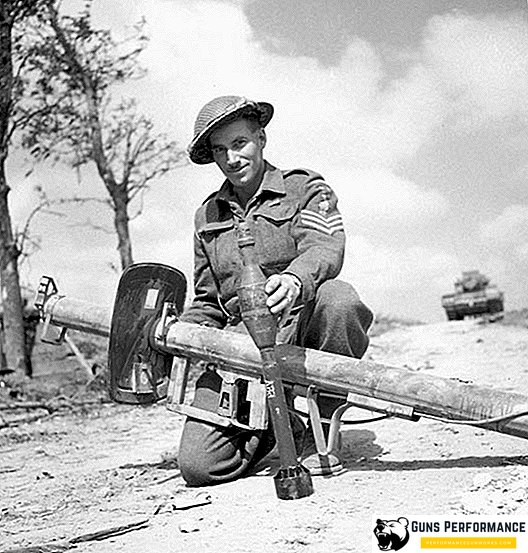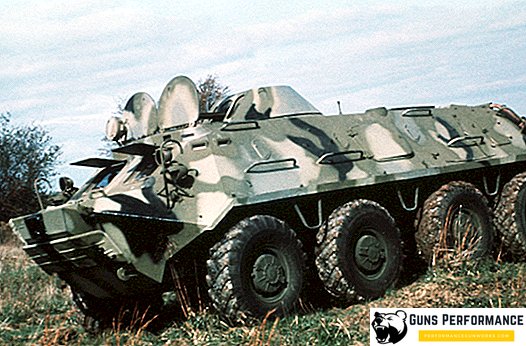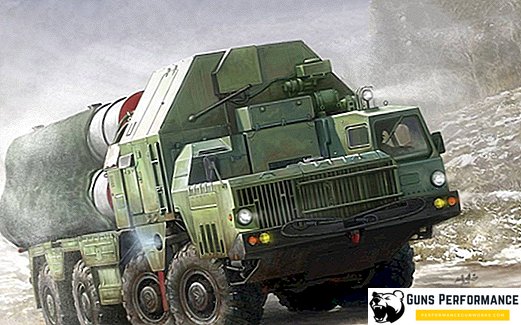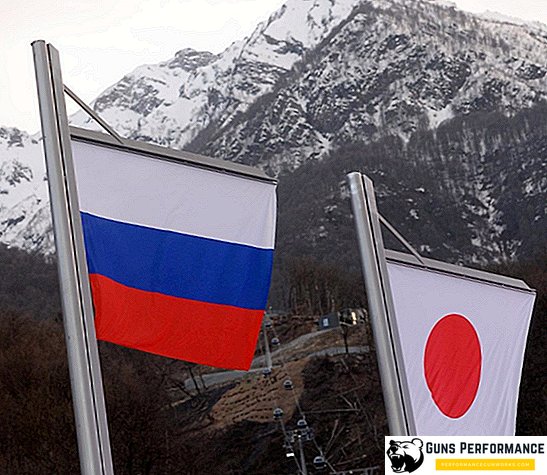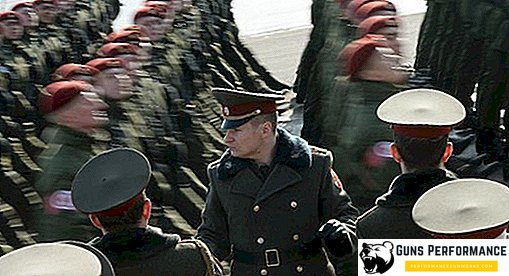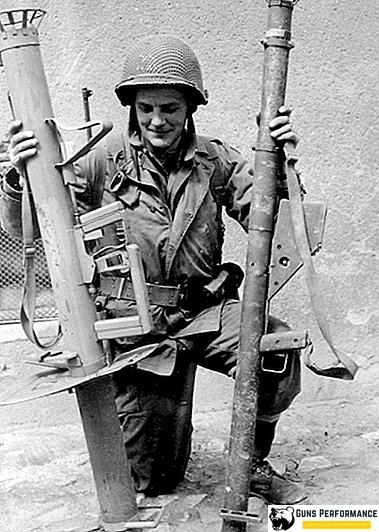
The Pantsershrek is a German reusable anti-tank grenade launcher from the Second World War period. He appeared in service with the German army in 1944 and proved to be a very effective means of fighting allied armored vehicles. Translated into Russian, "Panzershrek" means "horror of tanks."
During the war, the Germans created a huge number of new types of weapons, some of which can be called breakthroughs. Guided anti-tank missiles, cluster munitions, jets, ballistic and cruise missiles ... The list goes on. But the German grenade launchers - like the "Pantsershrek", "Ofenror" or the famous "Faustpatron" - are one of the few examples of direct copying from foreign samples.
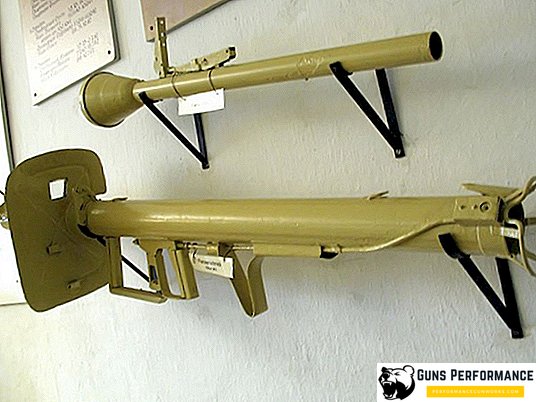
An example for the German designers was the American "Bazooka" M1, first used in North Africa. Although, having borrowed the principle of operation and the scheme of weapons, the Germans introduced many new things into the design of grenade launchers.
The Pantsershrek, in fact, is an improved modification of another anti-tank weapon - the German grenade launcher Ofenror. The main difference of the Panzerschreck from the base model was the presence of a shield that protected the shooter from the exhaust gases of a missile.
During serial production in Germany, more than 314 thousand Panzershrekov and more than 2.2 million missiles to them were produced. That is, for each grenade launcher accounted for only seven missiles.
"Pantsershrek" was a very powerful anti-tank weapon, its main disadvantages include relatively large weight and bulkiness. In addition, this weapon can not be called cheap and easy to manufacture. "Pantsershrek" was used on both the Eastern and Western fronts, it was in service with the units of the Wehrmacht, later these grenade launchers began to enter the units of the folksturm.
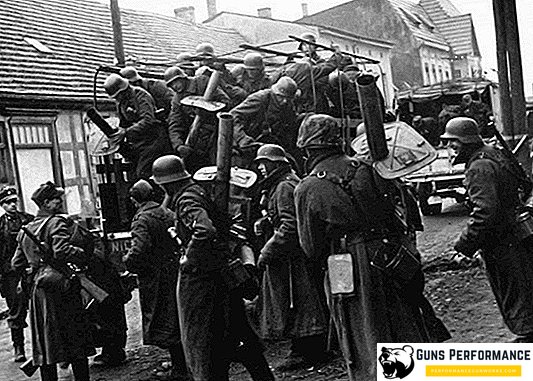
History of the creation of the Panzerschreck
The most famous grenade launcher of the Second World War, without a doubt, is the Faustpatron. Somewhat inferior to him in the "popularity" of the American "Bazooka" M1. However, attempts to create lightweight portable recoilless guns were made much earlier. In 1916, the Russian engineer Ryabushinsky created a recoilless cannon that fired shells with over-caliber shells. However, at that time there were simply no targets for this weapon: there were few tanks, and such a weapon was not very effective against infantry.
In 1931, a 65-mm Petropavlovsky jet gun was created, which was never accepted for service. There were other attempts to use recoilless weapons to combat armored vehicles, the value of which grew from year to year.
Just before the start of the war, the Soviet Union was able to create new models of tanks, with a powerful power plant and anti-missile booking - the T-34 and KV. The appearance of these cars on the battlefield was an extremely unpleasant surprise for the Germans. The most massive German anti-tank gun, the Cancer 35/36, did not penetrate the armor of the new Soviet tanks even from minimal distances, for which she received the nickname “beater” among the Wehrmacht soldiers. In addition, the Nazis were shocked by the total number of armored vehicles that the Red Army had.
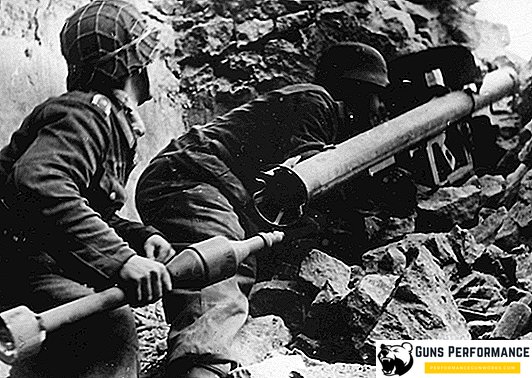
The 88-mm FlaK anti-aircraft cannon was an effective means of fighting Soviet armored vehicles, but it was not always and not always able to cover the infantry, and these tools were quite expensive.
The general situation with the anti-tank defense in the German army was described very precisely and succinctly by German General Staff officer Eyck Middeldorf: "... anti-tank defense is undoubtedly the saddest chapter in the history of German infantry ... Apparently it will remain completely unknown why within two years since the advent of the T-34 tank in June 1941 until November 1943, no acceptable anti-tank infantry weapon was created. "
Especially acute for the Wehrmacht, this problem arose in the second half of the war, when the advantage of the allies in armored vehicles became overwhelming. The Germans needed a new anti-tank tool, simple and effective, which would be characterized by sufficient mobility. Therefore, a new American weapon has become a real find for them.
German reports of the seizure of several US bazooka grenade launchers and their missiles during combat operations in North Africa have been preserved. This weapon fired 60 mm rockets and could penetrate 80 mm tank armor. However, this was not enough for a successful struggle with heavy Soviet tanks.
To create their own analogue "Bazooki", the Germans took a more powerful cumulative ammunition with a caliber of 88 mm, which was used for the Raketenwerfer 43 launcher. Rainsdorf In May 1943, tests of pre-production samples of a grenade launcher began, they were quite successful, and in October a new weapon was sent to the front.

The characteristics of the new anti-tank weapons were quite impressive: at a range of 150 meters, the rocket punched 210 mm of armor normal and 160 mm at an angle of 40 degrees. The grenade launcher received the Raketenpanzerbuchse 43 (RPzB.43) index, but the German soldiers called it Ofenrohr, which means "chimney". Under this name, he usually appears in various historical literature. "Ofenror" weighed only 9.5 kg, which allowed the use of these weapons directly in the combat formations of the infantry.
In October 1943, Ofenror hit the Eastern Front. The first experience of the grenade launcher was recognized as successful: now the German infantry could effectively withstand almost any type of Soviet tanks, and hit them at distances of 100-150 meters. However, this also revealed some rather serious flaws in the new weapon, the main of which was the danger to the grenade launcher himself during the launch of the rocket. A jet of hot exhaust gases could easily cause injury, despite the precautions taken. Gunner fear of burns seriously reduced the accuracy of shooting. During the use of the Ofenror, the grenade thrower had to wear a gas mask without a filter and fireproof gloves.
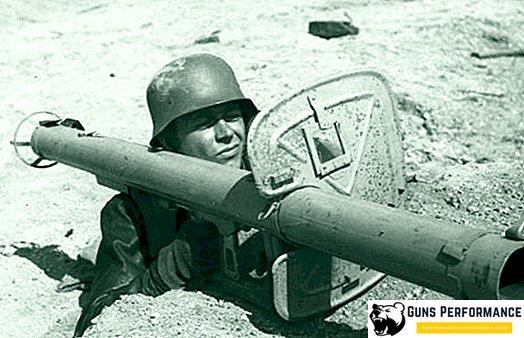
In addition, the Ofenror quickly burned out the barrel, it was enough for 300-350 shots. It was also noted that the exhaust seriously unmasks the calculation positions and can injure their own soldiers, who happened to be behind the grenade launcher. There were military claims to the sights of the grenade launcher.
In general, the practical use of the "Ofenrora" showed the significant potential of these weapons, but at the same time, the need to improve them became apparent.
In August 1944, a modernized version of a grenade launcher, which received its own name RPzB, began to arrive in the troops. 54 Panzerschrek. The main difference from the "Ofenrora" was the appearance in the design of a grenade launcher lightweight removable shield, which protected the arrow from the effects of hot gases. A small hole was made in the shield, covered with glass, through which the aiming took place. The set of weapons included a set of spare glasses.
Also, significant changes were made to the design of sights. From "Panzershreka" it became more convenient to fire at moving targets. It was possible to amend the position of the fly even for the air temperature, which significantly increased the accuracy of the weapon.

After the start of mass production of "Ofenrorov" and "Panzershrekov" changes were made to the field manual of the German army. Now they were instructed to create in each infantry company one anti-tank platoon armed with six grenade launchers. In 1944, most of the Panzershrek went to the Western Front, to Italy, France and Belgium. This weapon greatly increased the firepower of the German infantry divisions. At the end of the war, Ofenrory, Panzershreki and various types of Faustpatrons were the backbone of the anti-tank defenses of the German units.
Description of construction Pantsershrek
The Pantsershrek grenade launcher was a smooth-walled pipe with three guides, on which was placed a pulse generator, electrical wiring, a plug box and a trigger mechanism.
The calculation of the grenade launcher consisted of two people: loader and gunner.
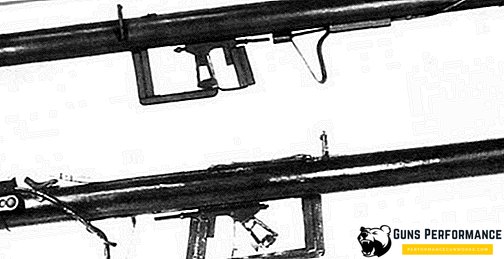
Unlike the "Ofenrora", the "Pantsershrek" was equipped with a shield that protected the arrow from the exhaust gases of the missile. Aiming occurred through a glass window cut in the shield.

A wire ring was placed at the rear end of the pipe, which protected it from contamination and facilitated the loading process.
Two handles and shoulder rest facilitated the process of aiming and shooting. The weapon had two belts for the belt, as well as a latch for fixing the ammunition inside the weapon.
The Germans decided to abandon the electric batteries with which the American Bazuki were equipped. Instead, the Panzershreki had a magneto which was excited by the movement of the steel bar while pressing the trigger.
For training purposes, special grenades without a combat charge were developed.
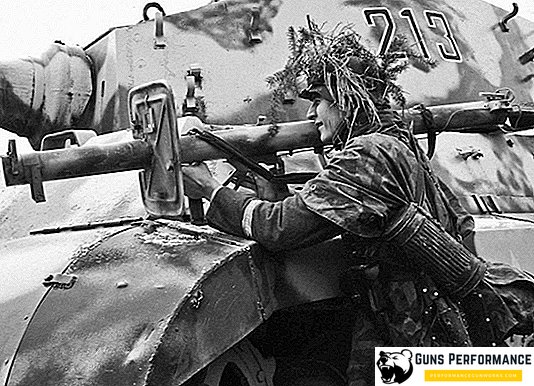
Panzerschreck characteristics
The following are the characteristics of the RP PzB 54 grenade launcher:
- length, mm: 1640;
- weight with shield, kg: 11.25;
- grenade weight, kg: 3.25;
- Max. firing range, m: 200;
- armor penetration, mm: 210.
